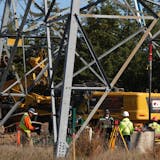The Department of Natural Resources "did absolutely the right thing'' by undertaking a deep analysis of state-owned timber resources but didn't go far enough in raising its annual harvest goal, according to an industry stakeholder.
Wayne Brandt, executive director of Minnesota Forest Industry, said the state won't even put a dent in its large rotating inventory of mature aspen as it shifts to a new 10-year sustainable timber harvest of 870,000 cords, an 8.75 percent increase in the overall harvest target.
Commercial mills in Minnesota utilize aspen more than other types of wood, and greater supplies of it bring lower prices for the raw material.
"We think there's too much old aspen on state lands,'' Brandt said.
But Jon Drimel, DNR forest resource planner, said the extensive computer modeling that went into the analysis indicated that foresters would have to sacrifice other management objectives to boost timber sales to 1 million cords a year. That was the benchmark former Gov. Mark Dayton asked the DNR to consider.
"We have to manage for competing interests without creating long-term problems for ourselves,'' Drimel said.
Brandt, Drimel and others shared their views Friday on Minnesota's public forest management at the annual DNR Roundtable. They each gave interviews to the Star Tribune.
Brandt said the wood products industry now consumes about 2.5 million cords a year. It employs about 64,000 people and produces $17 billion in annual economic impact. The DNR controls the biggest single source of wood in the state as the manager of 2.75 million acres of workable timberlands.


